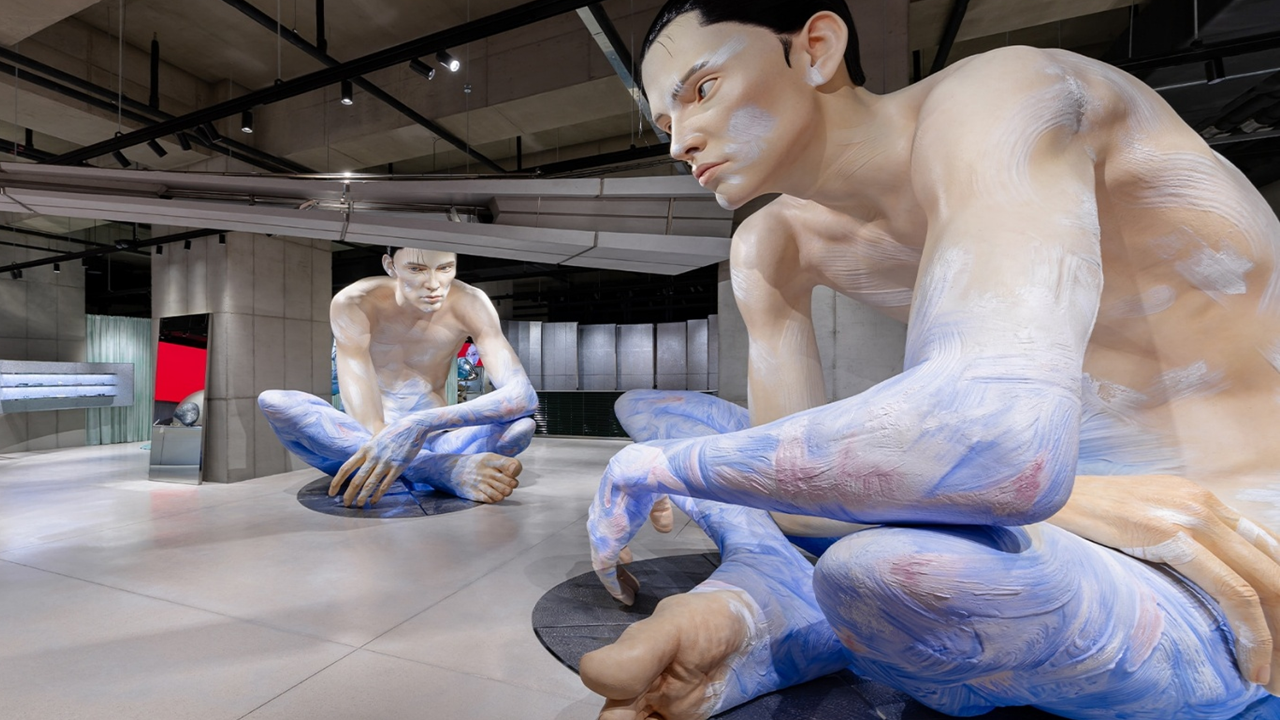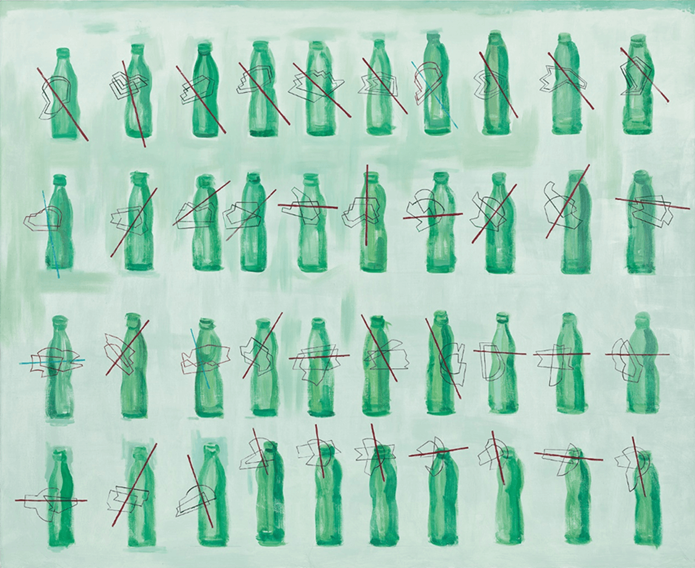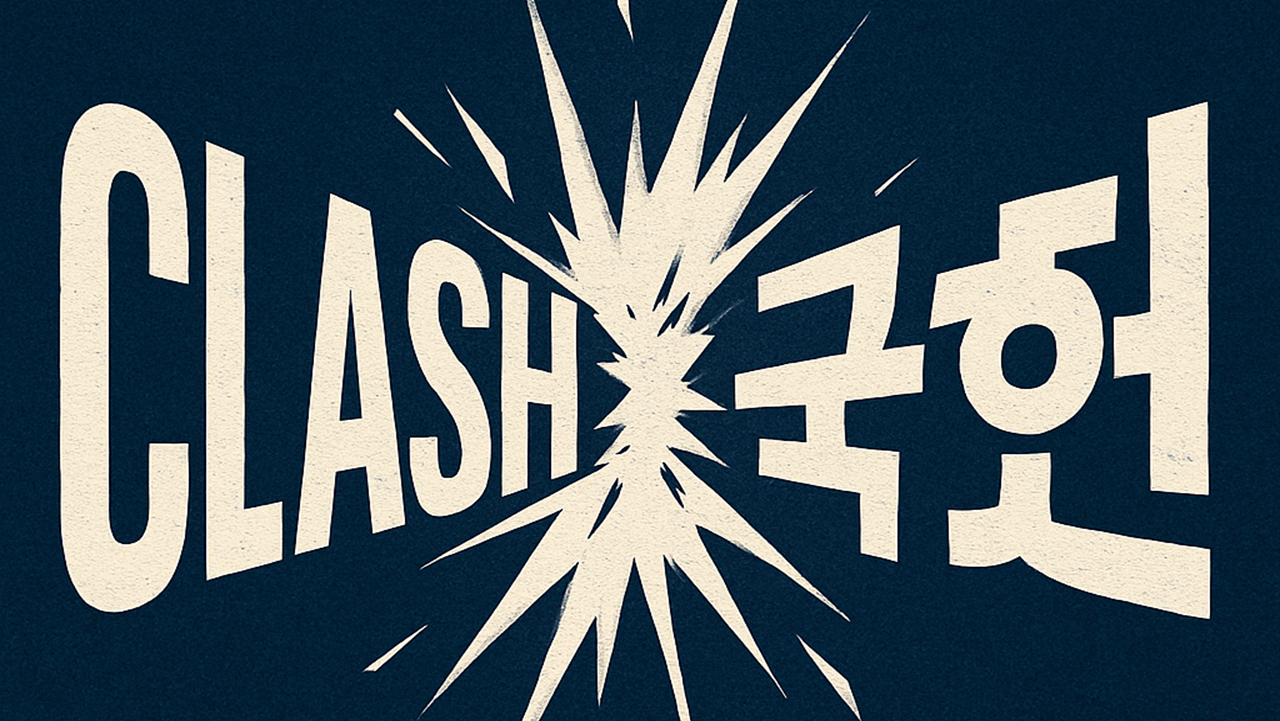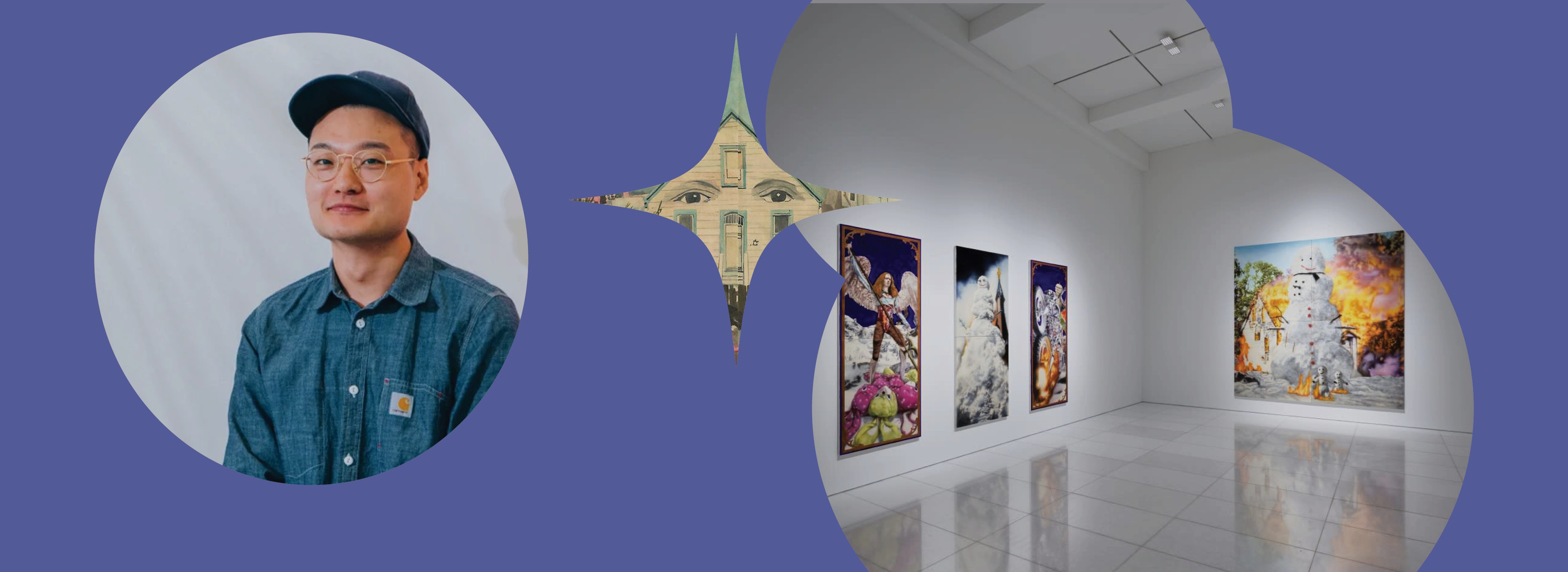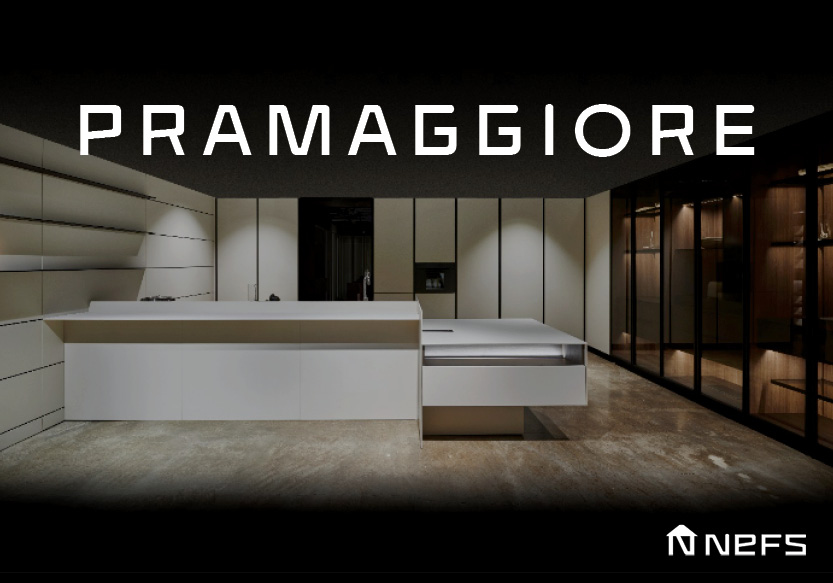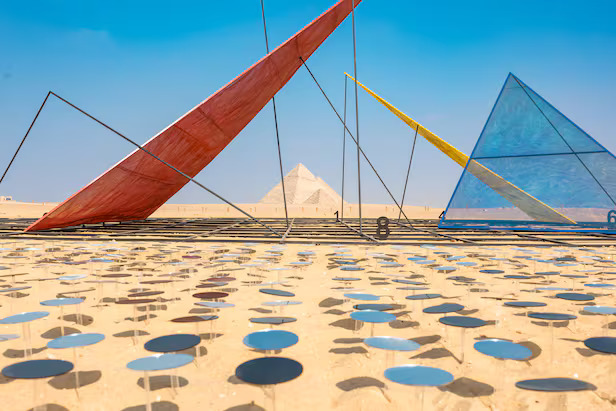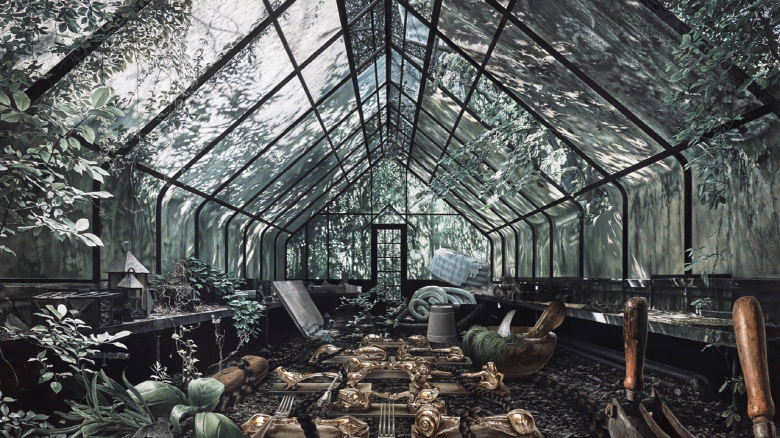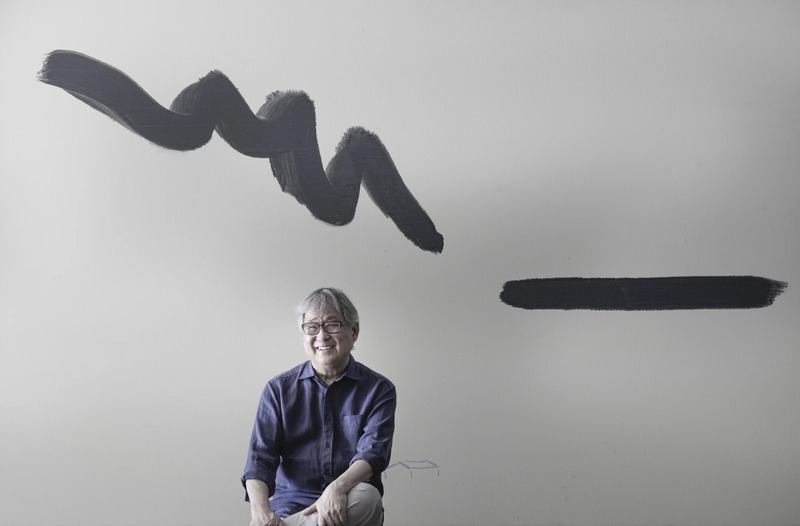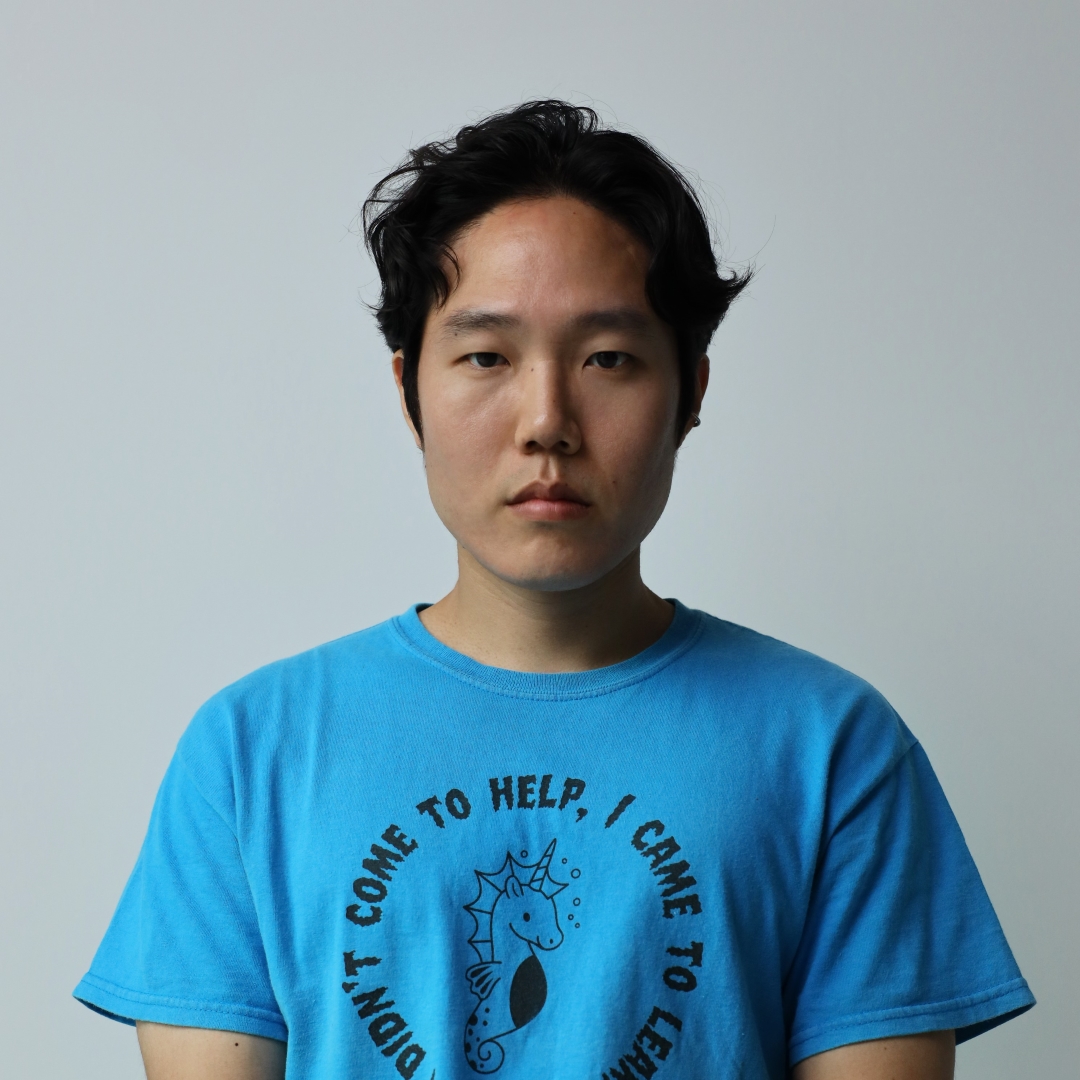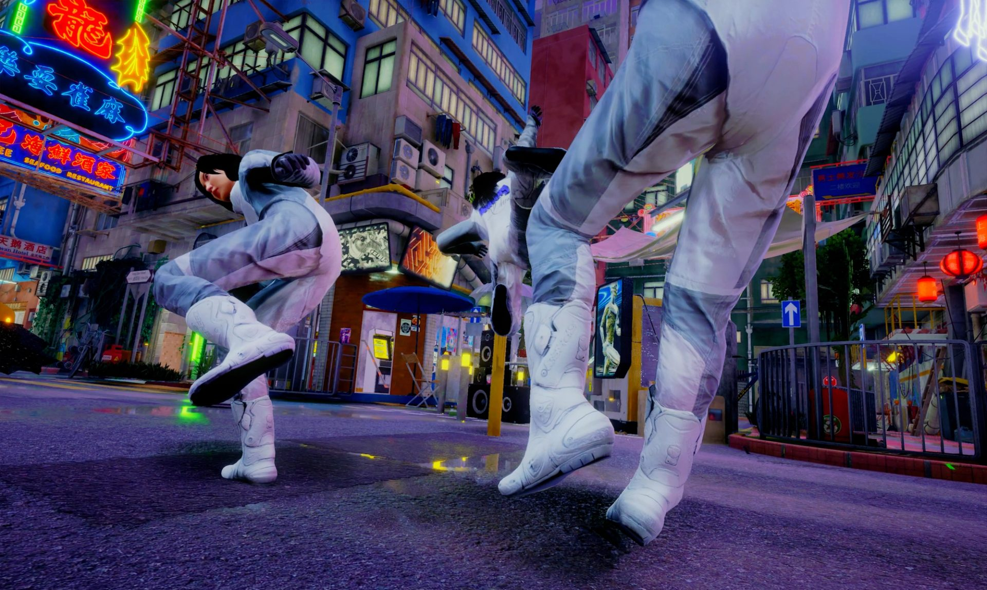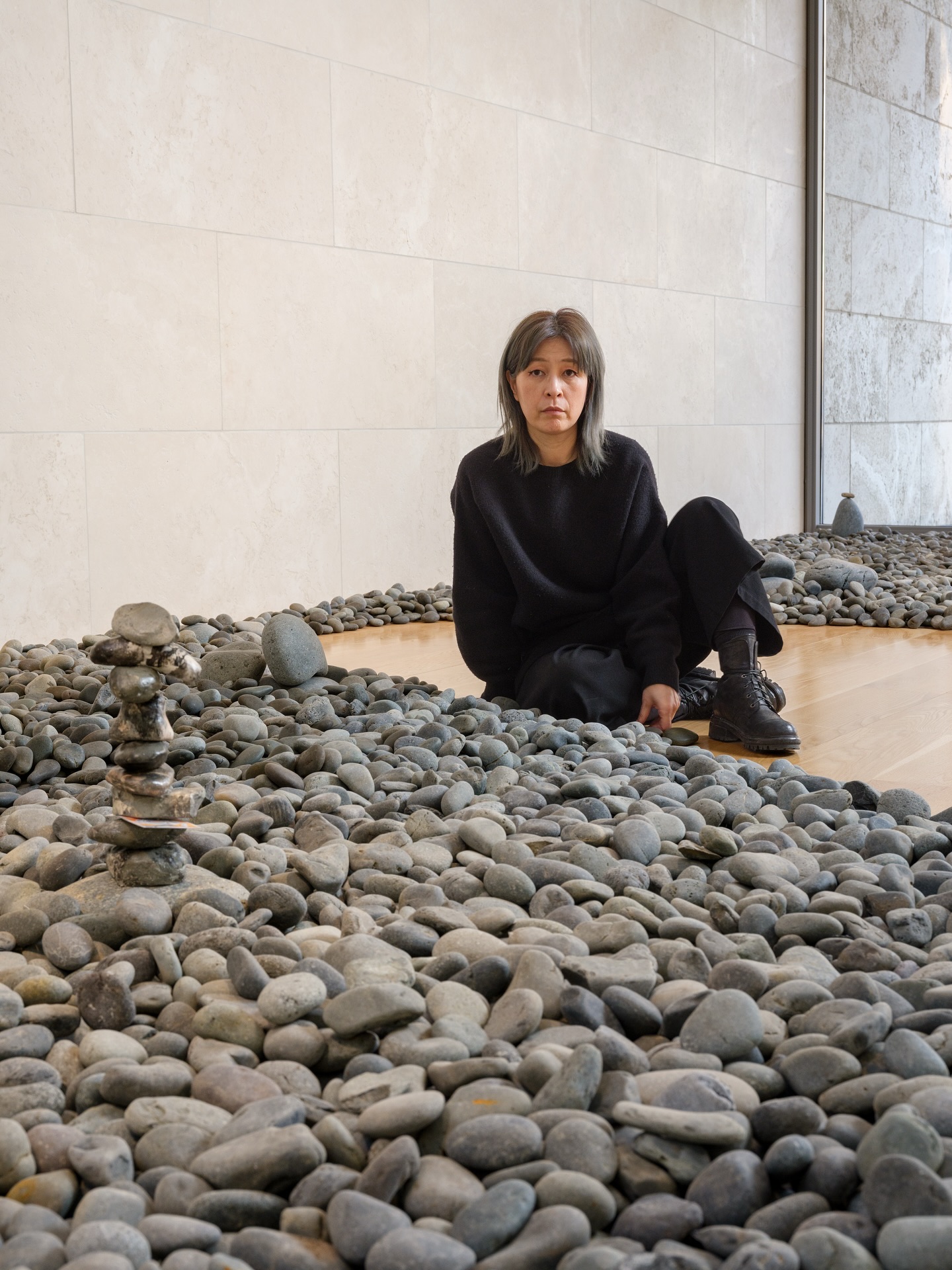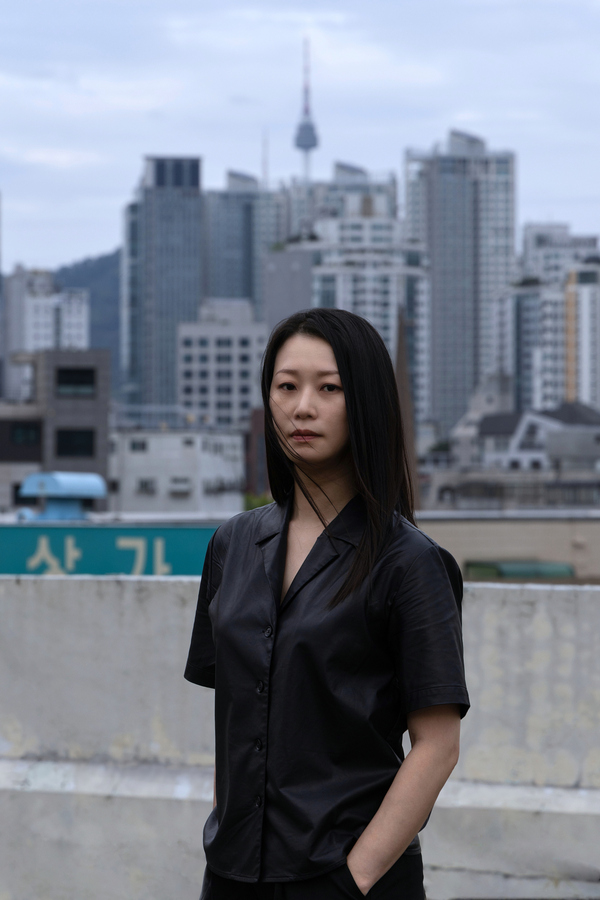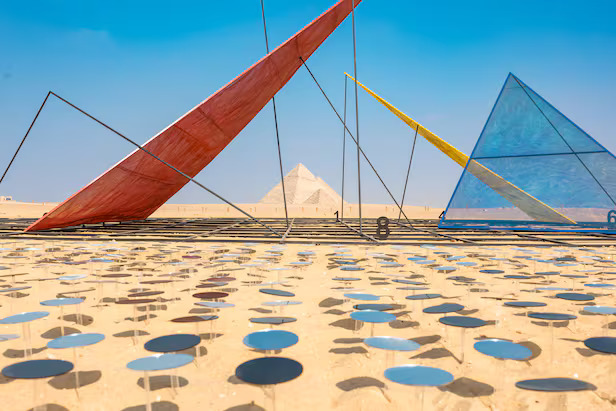
Code of the Eternal by J. Park, installed in the Giza Desert, Cairo, Egypt ⓒStudio J.Park·ENART
J. Park’s new land art work, Code
of the Eternal, has been installed in the Giza Desert southwest of
Cairo, Egypt, home to the UNESCO World Heritage stone pyramids.
Positioned in front of the ancient stone
pyramids, Code of the Eternal features red, yellow, and blue
primary-colored structures that trace the outline of another pyramid, slicing
across the desert horizon. On the ground, 1,000 acrylic mirror fragments
reflect sunlight, creating a sparkling effect.
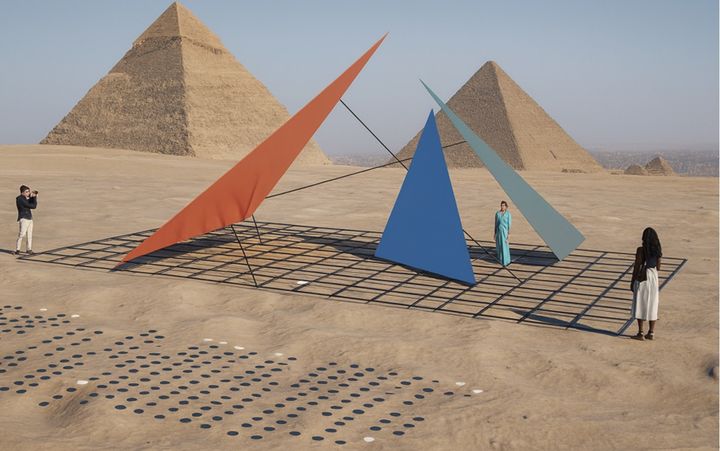
Code of the Eternal by J. Park, installed in the Giza Desert, Cairo, Egypt ⓒStudio J.Park·ENART
The installation
is part of the international art festival 《Forever is
Now》, which opened on November 15. J. Park is the only
Korean artist invited to this year’s exhibition, and presenting a new work in
front of the pyramids marks the second time this has occurred, following artist
Ik-Joong Kang last year.
Considered one of
the most prominent international exhibitions in Africa and the Middle East, the
festival is organized by the Egyptian nonprofit platform Art D’Égypte and held
annually each fall with the support of Egypt’s Ministry of Foreign Affairs, Ministry
of Culture, and Ministry of Tourism and Antiquities, in collaboration with
UNESCO.
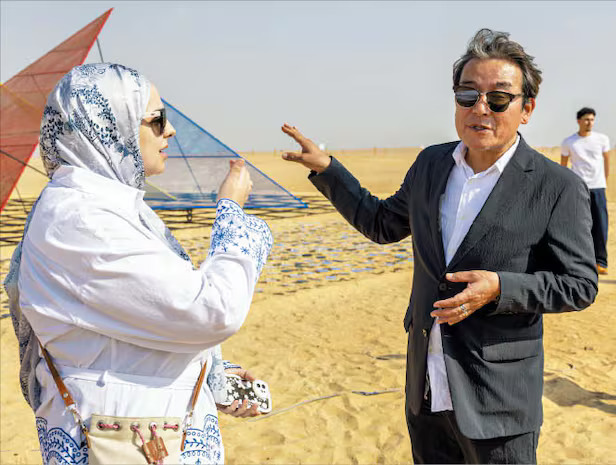
J. Park in an interview with local media ⓒStudio J.Park·E&A Art
J. Park’s new
work, Code of the Eternal, digitally reinterprets the unique
mathematical structure of the pyramids alongside the ancient histories of Korea
and Egypt, set against the desert landscape. Based on the actual height and
side lengths of the pyramid, Park constructed a triangular structure within a
square frame.
Park stated, “The
pyramid is the oldest geometric structure left by humanity, a kind of massive
code. Seeing my structure facing the pyramid and ‘breathing’ with it felt like
witnessing a landscape where different layers of time converge right before my eyes.”
This year, the
keywords of 《Forever is Now》
are “digital” and “eternity.” Lee Gyu-hyun, the Korean curator of the
exhibition, remarked, “J. Park’s work, which bridges the ancient histories of
Korea and Egypt while interpreting the pyramid’s uniqueness through digital
language, best embodies the theme of this year’s exhibition. It has also drawn
significant attention from local media as one of the standout works.”



